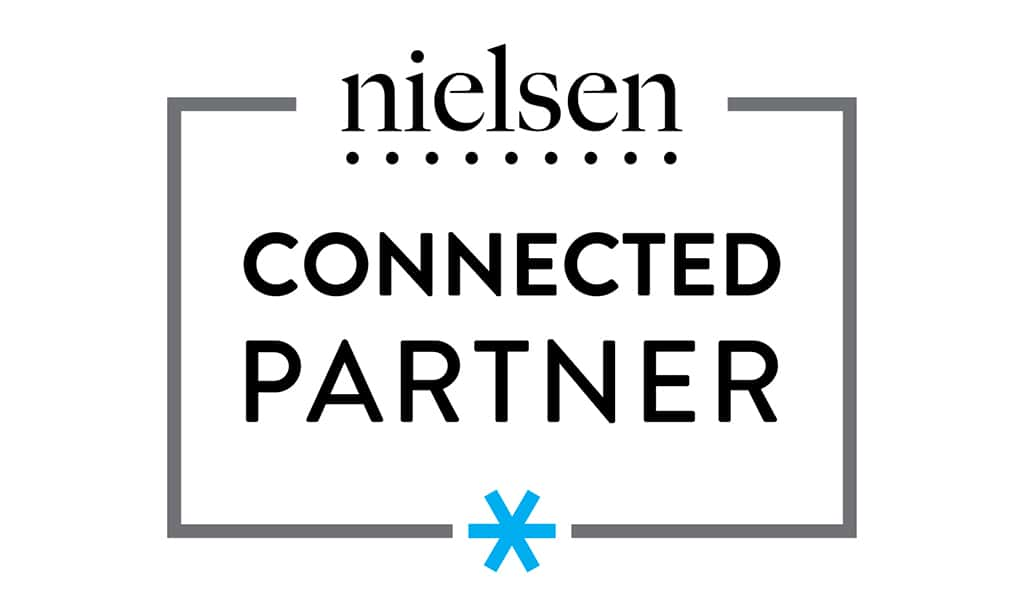Earn Money – Set up as an Amateur Photographer
In today’s digital world, there’s a huge demand for high-quality photos of (almost) any subject. Bloggers need photos for their posts, businesses are looking for images for their websites and homeowners are on the hunt for that next statement piece for their living room wall. All those images need to come from somewhere. If you have some languishing on your hard drive, why not set them free online for others to purchase and enjoy?

First, a word of caution from Popular Science: while selling your photos online can help you bring in some cash from a hobby you love, don’t quit your 9-to-5 just yet – you likely won’t make big dough starting out. For now, think of this as a way to hone your photography skills, and maybe make some pocket change on the side as you do so.
Now that we’ve got that caveat out of the way, here are some tips to get you started.
How selling stock photography works
There’s an entire array of stock photography sites out there that will happily handle sales and commissions, as well as license your photos to anyone who needs them – for a cut of the sale, of course. Visit any stock photo site and you’ll find a huge library of photos of different subjects taken by amateur, hobbyist and professional photographers who want to get their photos to market.
Keep in mind that each of these sites has their own terms and conditions. Make sure you confirm who retains the copyright to your work. In most cases, you’ll still own your photo. Buyers will purchase a license and use your image under specific conditions.
Some sites will offer royalties and other perks. If you agree to exclusivity, this means you’ll be paid more if you commit to not selling your photos anywhere else. Avoid those contracts and you’ll earn less money, but you can also submit your images to other sites.

Do your homework
Find your niche
What do you most like to take photos of? Maybe your niche is urban or rural landscapes, nature, travel, specific industries such as manufacturing, food or wine, etc. As Shopify has found, it takes a bit of studying what styles and photos are already selling to find a niche that will work for you:
“Finding your niche if you want to sell pictures online is typically something you feel your way into as you see which styles and photos resonate with your audience. But you can also evaluate the demand for certain topics using keyword research to analyze the search volume for terms related to your photographs.”
Shopify also suggests using the browser extension Keywords Everywhere to find the search volume, which will appear right in your Google search. Watch for the keywords that attract more than 1,000 average monthly searches. This gives you a starting point to hunt down in-demand subjects and angles that can spur ideas on what (or who) you may want to focus on.
Other keyword research tools include Soovle, Moz Keyword Explorer, KeywordTool.io, Google Trends and Google Keyword Planner, SEMRush, and many more.
Scope out stock photo sites
Stock photo sites handle the transactions and payment collections so you can focus on creating amazing images. These are just a few of the many stock photo sites you’ll have to choose from:
500px
500px is a stock photo site and community-based platform for photographers. Join and you’ll be able to submit your creative, commercial and editorial photos to their Marketplace, list yourself in a directory and follow other photographers. Log on to this site and you’ll see eye poppingly beautiful shots from around the world. See 500px.com/licensing for more information on submission requirements, becoming a contributor, licensing and more.

Adobe Stock
The Adobe suite of software is used by creatives worldwide to craft premium products, and the company has branched into offering high-quality stock photography, touting best-in-class royalties. Every time someone purchases your content, you’ll get a 33% commission for photos and vector art, and a 35% commission for videos based on the price of the image. You can also track sales in real time using the dashboard and save hours of time using their auto-tagging feature to add keywords.Visit contributor.stock.adobe.com for more information.
Alamy
Alamy is a resource for big brand names with big media budgets that need a range of stock image choices. You’ll get a 50% commission and can sell stock images, vectors and live news photos. Learn more about being a contributor.
Dreamstime
Dreamstime is one of the largest stock photo sites with more than 90 million images, and offers contributors a 25 to 50% revenue share based on the net sales amount for each transaction. Exclusive files receive an additional 10% bonus, and exclusive contributors enjoy a 60% revenue share for alls ales, plus a bonus of 20 cents for each approved submission. You can even become an affiliate and earn cash for buyers and contributors you send to the site. For more information, see their FAQ page.
Shutterstock
With more than 243 million royalty-free stock images, Shutterstock is another behemoth among the stock photo sites. Here, photos are non-exclusive and cheaper to purchase – a good place to start out. You can also create a personalized photo page, easily track earnings with smart tools and grow your skills by joining the international community. See submit.shutterstock.com for more details and visit The Shot List to see the most requested content Shutterstock customers will be looking for.
For more stock photography sites, see Make Use Of’s 12 most profitable places to sell your photos online.
Submit your photos
Choose one or many of the sites from the list above and submit your images according to the process specified on each site. Not just any snapshot will do – your images will have to meet a certain quality threshold. Also look for details about how you’ll be paid, as methods vary from site to site.
Don’t forget…
Your own website
That you can also sell your photos on your own website and keep 100% of the profits from your images! WordPress is a platform used by creative entrepreneurs all around the world and you can easily build an e-commerce portfolio site, install plugins like WooCommerce and Easy Digital Downloads, and have a gorgeous looking site built quickly.
Shopify
You might also consider building your site on Shopify’s platform, which has different themes you can use to change the look of your site and apps to add functionality.
Check into legal issues and ethical considerations
The old cliche that “with great power comes great responsibility” is very much true when you’re looking through your camera’s viewfinder. Don’t forget to look into privacy and other laws in your country before you shoot. When it comes to legalities, I first must state that I’m not a legal professional, and this advice was found via simple online research.
Digital Photography School reminds us that in the U.S., you cannot legally photograph people in private spaces without their expressed permission, since every citizen is guaranteed a reasonable expectation of privacy. On the other hand, when someone steps into public domains such as public parks, they forfeit their right to privacy and can legally be photographed without their consent.
There are also laws when it comes to using someone’s likeness for promotional purposes. While editorial use (selling your photo of someone in a public space to a publication or newspaper) is protected, you could not legally sell it or use it to promote your product, service or cause, because the subject didn’t consent to this use.
Therefore, Digital Photography School explains that you’ll want to have a model or photo release for people (and even privately owned buildings) if you’re going to sell your images as stock photography or submit them to photo contests where they could end up being used as promotional material for the person or company running the contest.
Check the laws in your country or location, and consult a legal professional, before you spend time and money attending an event or setting up a shoot.
Also consider your own ethics as a photographer. Depending on the circumstances, would you really feel good about selling a photo in which the subject didn’t want their photo taken, or published? What types of clients are you looking for, and who would you not be willing to work with?
Pay taxes
Now that you’re making income selling your photos, welcome to the world of taxes! You’ll need to declare the income you make from your side hustle, so do yourself a favour and track it closely throughout the year to make tax time as painless as possible.
Wrapping up
If you’ve got a decent DSLR camera, some time on your hands, and a talent for photography, you could be earning some cash back on your investment while improving your skills and meeting passionate photographers from all over the world. As with any side hustle, there are factors to consider before making the leap, from which platforms to join and how to choose your niche to marketing, and legal and tax implications. Once you navigate these, grab your camera, launch your website and above all, have fun!
Learn more about how to earn money as an amateur photographer
How to make money selling your photos online – Save the Student
Sell your photos online: 5 websites that pay $100 per image or more – The Penny Hoarder
Top 12 places to sell photos online and make money – Envira Gallery Blog
37 ways to make money selling photos online – The Work at Home Woman
The Side Hustle
8 websites to make money online
Make more Money with your AirBnb Listing
Careers Survey Results:
Canadian's Want More Than A Pay Cheque at Work
In late August 2018, Caddle surveyed 10,000 Canadians on their careers, job seeking, the importance and impact of workplace culture, and more.

Full-time employment still most popular
When it came to employment status, full-time (54%) still outstripped part-time by far (13%) and self-employed (6%), although 10% were homemakers and 5% were retired. Among the unemployed, 4% were looking for work. People not employed and not looking for work and students tied at 3%.
In a traditional workplace setting, your title might factor into both the type of work you do and your experience overall. 31% of respondents reported they were Intermediate level, followed closely by those who didn’t categorize their title (29%). Entry level and Middle Management each came in at 15%, while Executive and Upper Management employees rounded out the bunch, each coming in at 5%.
Curiously, 23% of people didn’t name their industry, while 14% were in health care and social assistance. Educational services came in a distant third, while educational services and other (except public administration) followed at 9% and 8%, respectively.

What keeps employees happy?
Because we spend so much of our lives at work, it’s important to be happy with our jobs, and for these respondents it takes more than a pay cheque to make that happen. In fact, “I just want a pay cheque” did not even crack the top five, but “work-life balance” took first place by far at 30%, followed by “being treated with respect” at 22%. “The opportunity to help others”, “having variety and change at work” and “having my work recognized” took up the last three spots in the top five at 22%, 14% and 8% respectively.
How important is workplace culture?
We often hear about how important workplace culture is – it can affect everything from your interactions with leadership and coworkers to ever-critical work-life balance and the company’s ability to recruit new employees. 91% of respondents said workplace culture was “moderately important”, “somewhat important” or “extremely important” both to their professional success and personal happiness.
Not unsurprisingly, salary still attracted these employees to their current positions, with 22% saying the main reason they accepted their current job was because it offered a “better salary than (a) previous role.” For 16%, it was a “unique work opportunity”, while 13% “simply needed a job.”

What perks and policies do employees value?
If you plan on staying in your position for the long-term, perks and policies become more important as your lifestyle and needs change throughout your time with a company. When it comes to which are most important to respondents, “Flexible hours” was the clear favorite at 29%, while “happy/friendly coworkers” came in at a distant second with 13%. “Work from home policy” netted 12%, while 11% picked “personalized benefits” and 10% were easily pleased – they just wanted a job they didn’t hate.
Are employees applying elsewhere?
If curiosity has ever gotten the best of you, you’re not alone. In fact, 52% of respondents believe it’s “completely acceptable” or “somewhat” acceptable” to apply to other jobs even if you have no intention of leaving your current job. They were split about whether it was okay to attend a job interview if you don’t have any intention of leaving your current job; 30% believed it was “not at all acceptable”, while 28% believed it was “somewhat acceptable.”
Loyalty
How restaurants are building relationships
In his classic Kitchen Confidential, the late, great Anthony Bourdain famously revealed that the best day to eat out is Tuesday – for three key reasons:
- The best chefs are off duty on Monday, return rested and ready to go on Tuesday.
- Fresh ingredients are typically delivered to restaurants on Tuesday (also Thursday and Saturday).
- Chefs prefer to cook for weekday guests than weekenders, because weekday guests are the true regulars – weekends typically track in tourists.

Restaurant Logic reinforces the importance of prioritizing regulars: they provide stable income, will champion you and recommend your restaurant to others, and are more willing to provide honest, helpful feedback to you, because they know you.
In a recent Caddle survey, 60% of respondents see loyalty and rewards programs as an important factor in their dining decision. Quality food and quality service are always important factors when it comes to food, but a loyalty program can seal the deal and help build your relationships with regulars.

Clutch reports that loyalty members have a 26% higher annual spend, 10% increase in purchase frequency, 15% higher average order value, and 25% higher engagement versus non-members. Upserve states that 82% of loyalty members refer at least one person and spend an average of $2.14 more than non-members, which is vital in the quick service restaurant industry.
Upserve recommends offering a VIP experience to loyalty members, while Webstaurant Store suggests offering incentives such as a chance to win a free meal or gift certificate, to consider loyalty programs that integrate with your Point of Sale system, and to utilize the program to improve traffic during quieter periods throughout the week. Finally, Webstaurant recommends to make sure your rewards program is attainable, favourable, and above all else – simple.
Dollars for data
How researchers are rewarding users
The products and services we use every day are made increasingly better by the data we provide marketers, brands, and researchers. But do we deserve more?
In today’s world, everything from your puppy portraits to the route your ride share driver takes are being tracked. Sporting a step counter, pre-ordering your pumpkin spice latte on-the-go, even the sultry sounds you select on Spotify – in almost every aspect of our daily lives, meaningful data is being collected and influencing the future products and services sold back to us.

The data we provide [ideally] result in more accurate, tailored solutions provided back, but should we be rewarded further for the data we’re providing? When Caddle users were asked this, 89% said “of course!” The research and reward model is one that Caddle has helped pioneer and polish in Canada, and thanks to peers following a similar model, the world is becoming fairer for users sharing tidbits of their preferences online.
Here at Caddle, we employ a simple and effective cashback model: businesses pay to feature ads and ask questions to our users, our users collect cash for watching ads and answering questions, and we earn a small amount in handling the overall transaction and providing an easy-to-use platform. The benefits of our solution are immediate: businesses pay for ads that actually get attention, and users are rewarded for their valuable time and data.

Other Canadian companies have embraced this collegial approach to data, too. Carrot Rewards focuses on wellness, integrating with fitness apps like Fitbit and then rewarding users for steps via existing loyalty programs such as Aeroplan, Petro Canada Petro Points and Cineplex Scene. Along the way, users have the opportunity to earn more rewards via surveys (commissioned by external partners), not dissimilar to Caddle.
Peer-to-peer goods trading network Bunz recently embraced both cryptocurrency and the research/reward model with the release of BTZ (pronounced like “bits”), a currency that Bunz users can use in trades or at local businesses who accept it for payment. Users can further earn BTZ by answering single-question surveys from Bunz each day.

Whether or not global social media giants like Facebook and Instagram will adopt similar reward-focused research models remains to be seen, but as publications like The New York Times and The Economist are poised to help challenge the digital world, we’ll keep doing our part.
Social media sites and why it's hard to leave
Earlier this year, Caddle surveyed users on their relationships with social media and awareness of the Facebook and Cambridge Analytica scandal. Not surprisingly, Facebook remains the most-used platform among users from Boomers (64%) to Generation X (64%) to Millennials (59%), while Gen Z users are favouring Instagram at 36% versus Facebook at 23%.

In March, USA Today reported the trend of users parting from Facebook and prioritizing Instagram for social networking. Citing Pew Research Centre, USA Today highlighted that “…800 million people log in to Instagram at least once a month, 500 million of them every day… 35% of US adults use Instagram, an increase of 7% from 2016.” This comes as no surprise to TechCrunch editor Josh Constine, who explains that, “Every social network has a half-life. Eventually parents get on it, grandparents get on it, your boss gets on it. And you don’t want to hang out with them.”
…800 million people log in to Instagram at least once a month, 500 million of them every day… 35% of US adults use Instagram, an increase of 7% from 2016.

And yet, with the dominance of Facebook and the rise of its subsidiary Instagram, many Instagram users are unaware of the connection and their privacy risks with the revelation of the Cambridge Analytica scandal. CBS News reported in April that almost 57% of Americans do not know that Facebook owns Instagram. The lack of representation regarding this relationship is purely intentional, too – to this day, there are no evident branding ties between Facebook and Instagram platforms, nor Facebook’s other biggest subsidiaries such as WhatsApp and Oculus VR. This may change with the recent exit of top Instagram executives Kevin Systrom and Mike Krieger following a contentious year between Instagram and Facebook; The Verge is predicting “the end of Instagram as we know it.”

If you’re an avid Instagram user and think you may be affected by the Facebook security breach, Tech Crunch provides a thorough guide on what to know and what to do next.
Cannabis stigma - is there a change on the way?
is there a change on the way?
In a Caddle survey of approximately 10,000 Canadian non-cannabis users earlier this year, our team found that 77% of respondents had no intention of trying cannabis once legalized in Canada. When asked about potential reasons why they might potentially try cannabis, 49% of respondents maintained that they simply would never try it. 43% were against legalization of recreational cannabis in Canada, 53% either disagreed or strongly disagreed that legalization would be good for society, and 54% of respondents felt there is a negative stigma still associated with cannabis use.

What are the stigmas?
Last year, the Government of Canada commissioned an official Canadian cannabis survey, including both users and non-users from 16 years and up. In the survey of 9,215 Canadians, 77% of respondents felt that cannabis could be habit forming, and while nearly half indicated positive effects on mood, anxiety, sleep and creativity, the majority of respondents felt that cannabis can negatively affect motivation (57%), memory (58%), concentration (59%), attention (60%) and decision making (62%). Interestingly, while alcohol was widely considered the most socially acceptable substance, more respondents felt cannabis was socially acceptable (28%) than tobacco (19%).
Is legalization driving the stoner stereotype away?
In a 2017 study performed by U.S.-based cannabis research firm BDS Analytics, the researchers found that the average household income among Californian consumers is $93,800 compared to $74,350 for non-users. Californian users are more likely to hold master’s degrees, and Colorado users are more likely to be employed full-time compared to non-users. In the same study, BDS Analytics found that users from California and Colorado (two of the nine United States where cannabis is currently legal) are more likely to consider themselves very social, and are more likely to enjoy the outdoors and volunteer their time compared to non-users from the same states.

How will the stigma turn a corner?
For the non-users surveyed by Caddle, the leading reasons why they might try recreational cannabis once legalized included pain relief and relaxation (14%), curiosity (12%), and reduced stress and anxiety (10%). Wellness is a constant reason for interest and usage according to most research available so far. In a report by Deloitte, the top two reasons for using recreational cannabis include relaxation and sleep (66%), and to reduce stress or anxiety (62%).
Read more from the Caddle Cannabis Survey
Canadian identity: Seven similarities of the common Canadian
Although known for embracing the many cultures that make up Canada’s mosaic, it appears our multicultural population share more in common than one might expect. In a recent Caddle survey, 70% of respondents felt they have much in common with Canadians from other provinces – and here are seven of the many traits we share:
1. Frenzied fans of hockey
Invented in Canada, hockey is our official national sport. Canadian-born players continue to make up the majority of the National Hockey League at 41.6%, and our national teams have dominated on the international stage for generations.

2. Notoriously nice
If there are common characteristics non-Canadians cite of Canadians, it’s that we’re warm, welcoming, and polite – if not to a fault. In fact, without exaggeration, we’re likely to apologize even if you’re the one truly at fault. Sorry about that.
3. Hankerin’ for Hortons
Truly ubiquitous, Tim Hortons is the largest fast food restaurant and most popular coffee in Canada. Even the most hard-hearted coffee hipster will concede that Tims/Timmies coffee is iconic, beloved across the country, and a definite road trip staple.
4. Cottage country crazy
Home of approximately 60% of the world’s lakes, it’s no surprise that Canadians prefer to spend summer weekends at the lake.

5. Comedic claim to fame
From Catherine O’Hara to Eugene Levy, Jim Carrey to Mike Myers, Michael Cera to Seth Rogan – Canada is a historic hotbed for comedic talent.
6. Desired differentiation
If there’s one not-so-nice quality many Canadians share, it’s an almost passive-aggressive need to be known as distinctly not American – especially in our travels abroad.
7. Eh B C’s
For a word so short, there’s no shortage of its use. We often do not realize how much we say “eh” until we step foot in another English-speaking country where it’s not commonly used. Go figure, eh?
Caddle Announces New Nielsen Partnership
Caddle Announces New Nielsen Partnership
We are pleased to announce our inaugural membership as a featured partner in the Nielsen Connected Partner Program in Canada. The Nielsen Connected Partner program will allow clients and approved Connected Partners to spend less time on data management and data alignment and more time focused on garnering value from Connected Partner insights.

Connected Partner Program
Grounded in Nielsen data, the Connected Partner Program will allow Connected Partners and clients to bridge their insights through a mutual data source and integrate Connected Partner tools and technology into existing workflows. The result is a solution that will enrich the capabilities and insights for both clients and Connected Partners, with every interaction.
“Caddle is thrilled to be named a Nielsen Connected Partner. As Nielsen is an industry leader, it was an obvious next step for our business to join this initiative,” says Ransom Hawley, CEO of Caddle.
Caddle is an innovative research company, providing consumer insights through our Mobile Focus Group platform. By leveraging our joint assets, we’ll be able to collaborate on innovative solutions, ultimately, offering better data solutions and insights for our clients.
Testing Ideas
Caddle allows you to test your ideas in real-time through a mobile consumer research platform that offers users cash-back to connect with your products and services through polls, ads, social media and rich e-coupons. In return you will gain powerful consumer insights that can be used to increase distribution, convert consumer that purchase competitors, and improve targeting & measurement of programmatic advertising.
Through the Connected Partner Program, Nielsen’s data will be integrated to provide a more comprehensive view of your most valuable consumers and their category.
Looking for more information on the Neilsen Connected Partner Program? Looking for more information about Caddle?
Restaurants dining for Canadian food
In 2017, Dalhousie University conducted a survey of 1,019 Canadians regarding their dining habits – how often they dine out, get take-out or delivery, dine alone or with others, and whether they cook at home. 42% of respondents claimed to buy ready-to-eat meals or dine at a restaurant once or twice a week, and 3% admitted to doing so daily. Experts concluded that the top reason for dining out so regularly is a lack of time to prepare meals at home.

With Canadians dining at restaurants frequently, what is causing Canadians to choose specific restaurants? Caddle set out to determine this in a recent survey, and 39% of respondents cited word of mouth as their top reason. Coupons came in second at 14%, menu options at 13%, online reviews and social media tied at 12% each, then a big drop to newspaper/magazine articles at 3%. What may come as the biggest surprise is that 0% of respondents credited online ads as a prompt to try a new restaurant.
This doesn’t necessarily mean that restaurants should cancel any paid placements – there are good reasons to remain open to advertising and various ways to achieve effective ads. Paid endorsements by social media influencers, Google AdWords to improve your visibility in search, boosted posts on relevant platforms such as Instagram – there are many avenues to consider and explore, regardless of budget.

However, what this research does reveal to restaurants is that above all else – what matters most is the quality of what you’re serving and how you serve it (i.e., customer service). Four of the top five reasons why Canadians choose a certain restaurant revolve around these factors. If you provide a memorable meal and impeccable service, diners are more likely to recommend you to family and friends, potentially leave a positive review, and brag about trying your food to their followers.
